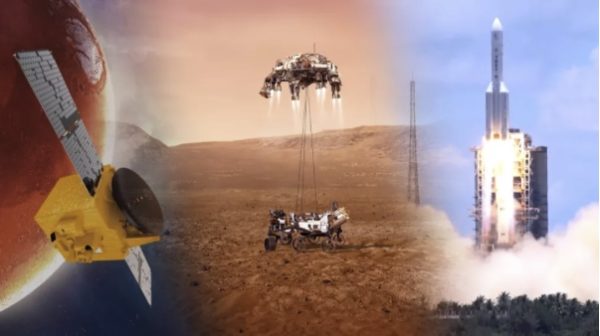It’s a busy February for Mars, with three probes from three separate countries arriving at the Red Planet over the course of just nine days. But this Martian party didn’t happen by coincidence — it has to do with the mechanics of both Earth and Mars’ orbits.
The United Arab Emirates’ first interplanetary mission, the Hope probe, achieved Mars orbit Tuesday (Feb. 9), as Live Science sister site Space.com reported. China’s first interplanetary mission, Tianwen-1, is scheduled to enter its own Martian orbit Wednesday (Feb. 10). The Chinese probe includes both an orbiter and a lander with a rover onboard, which is expected to try to land on the surface in May. And on Feb. 18, NASA’s first-of-its-kind descent vehicle will reach Mars and plunge directly through its atmosphere. If all goes according to plan, the vehicle will shed its outer shell and use rockets to stop its descent at the last moment. Then it will hover above the surface to lower the rhinoceros-sized, nuclear-powered, $2.7 billion Perseverance rover to the dirt via skycrane.
All these robots showing up at almost the exact same time is no coincidence, said Jonathan McDowell, a Harvard University astrophysicist and spaceflight expert.
Mars and Earth are like “runners on a circular racetrack,” he said. “And the really fast runner [Earth] regularly laps the runner just on the outside [Mars]. So sometimes they’re right next to each other, and sometimes they’re on opposite sides of the track.” This Earth-Mars cycle, meaning Earth completely laps Mars, takes about two years to complete.



